[Note: This article was first published on Hubpages many years ago. It got a lot of traffic. It has since been unpublished by the new management at Hubpages. It has now found a home on PubWages.]
This week, my daughter was assigned a rainforest diorama to make. Her grade on this assignment counts as a science test. This is a little odd, I think, as the skills necessary to make an effective diorama fall mostly into the category of arts and crafts. I love art and so does my daughter, but let’s face it, doing well at making a diorama has next to nothing to do with understanding scientific concepts.
Any child who doesn’t have much ability in sculpting, drawing, cutting and pasting or graphic design is bound to do poorly on this project, no matter how much he or she may understand the rainforest as an ecosystem.
However, if an assignment in art is handed out, even if it is labeled as science, there’s no reason not to have fun while doing it!
Producers: Plants
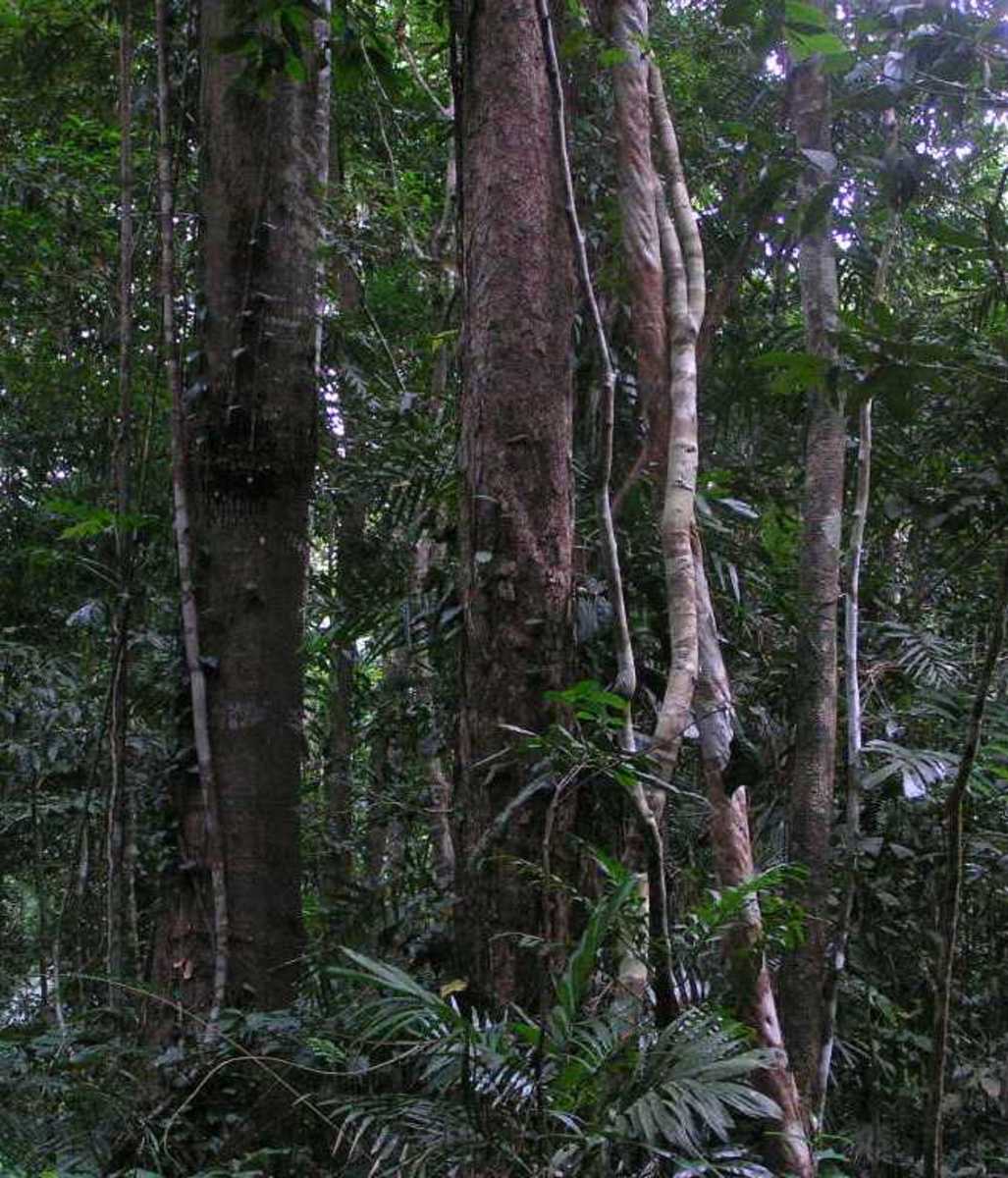
- Is rainforest one word or two | ChaCha Answers
ChaCha has the answer to this question: Is rainforest one word or two Answer: The word rain forest is sometimes used as one word and others as tw… …MORE…
Spelling Issue: One Word or Two?
Before we get started on the project, the first issue that comes up is one of spelling. Is “rainforest” one word or two? The answer is: either way will do. It’s one of those words that are in the process of lexicalizing. This means some spell it as one word, and some as two, and neither way is wrong. I’ve chosen the one word spelling. My daughter’s teacher, in the assignment sheet, spells it as two. We are both correct.
The Hubpages capsule spellchecker likes two words better, although it does not always make its preference known. It seems to particularly object to the one word version when used as an adjective.
Reading the instructions
Before embarking on any school project, it’s always a good idea to make sure that your child has carefully read and understood the instructions. Here are the instructions for making the diorama that my daughter brought home from school:
Rain Forest Diorma
This diorama will be graded for your Test on Chapter 4, so your best effort is needed!
Directions: You are to make a diorama of a rain forest.
Due Date: Friday, October 23, 2009
Materials needed:
- a shoe box
- plastic animals/plants or pictures/drawings of animals and plants
- you can make them from construction paper, play-dough, clay
You can use rocks, sticks, gravel, anything school appropriate. Ask if not sure.
The animals and plants should be appropriate for a Rain Forest.
You must have:
- Animals
- Plants
- Sunlight
- Water
- Soil
- Decomposers
- Producers
- Scavengers
- Show interactions of organisms
- Diorama must be neat and readily understood
Please do not go out and purchase all these materials. There are things you can use without spending money. Use your imagination!!!!
- How to Make a Rainforest Diorama | eHow.com
How to Make a Rainforest Diorama. A rainforest diorama provides a three-dimensional scale model ideal for explaining the complex rainforest ecosystem. A diorama clearly displays each layer of the rainforest and the relative sizes… - Make A Rainforest Diorama
Make a rainforest diorama. This diorama is unique in that its design shows you the important structure of the rain forest.
Rainforest
The Amazon River
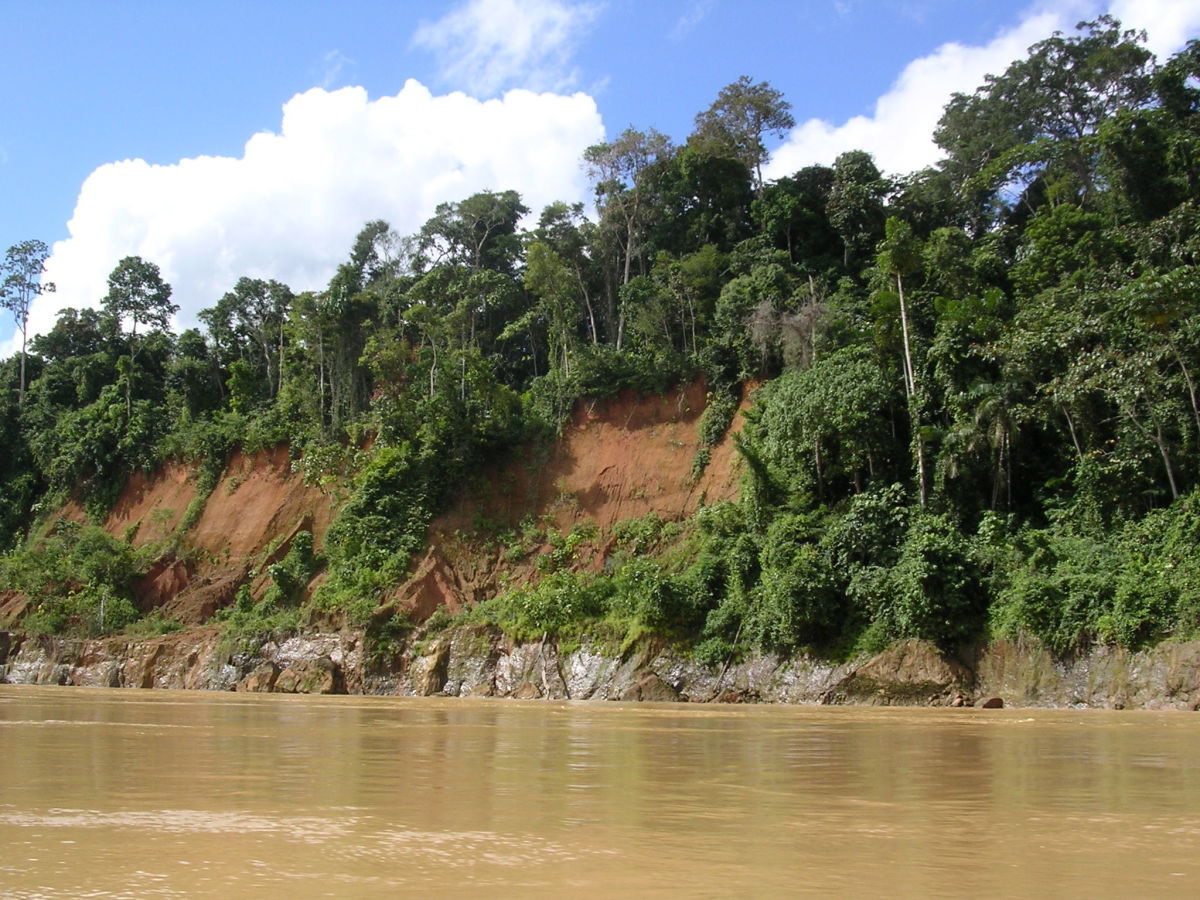
Cocoa Tree
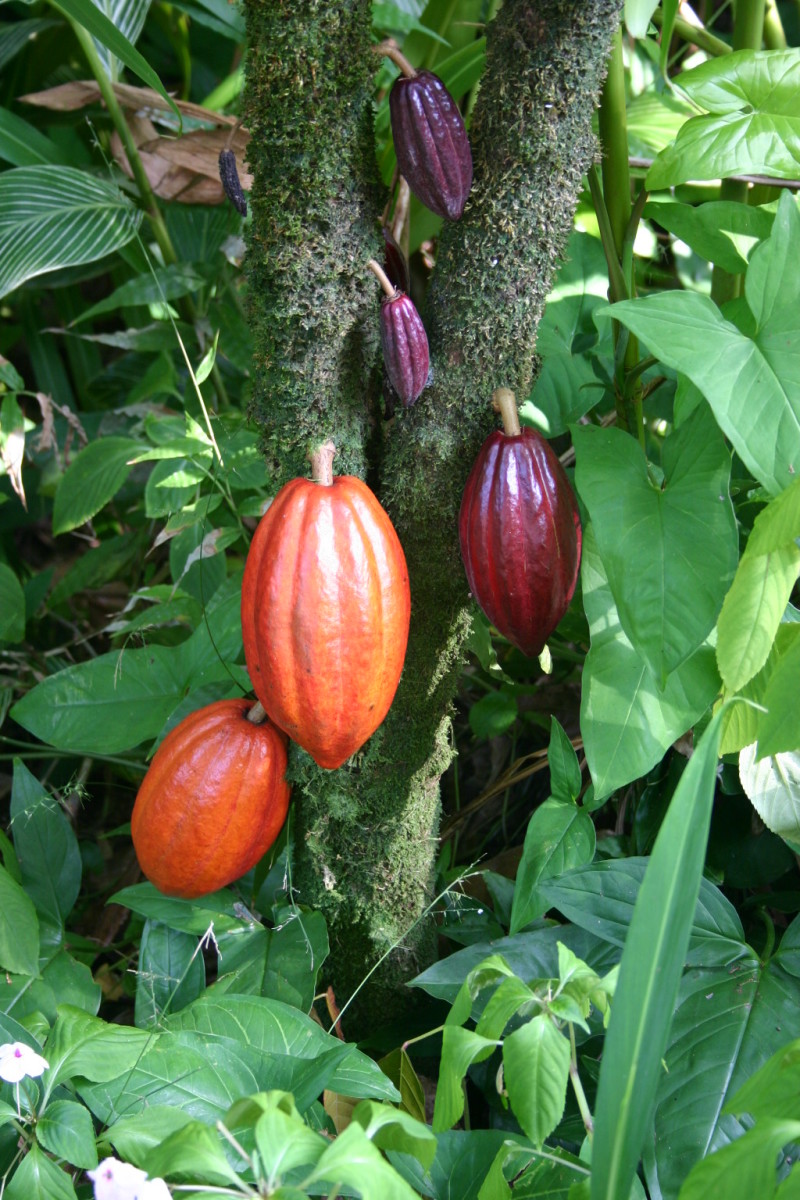
Following the instructions
The module my daughter’s fifth grade class is studying is about the trophic levels or who eats whom, I gather. The rainforest is just an example of such an ecosystem. Plants are producers who take the sun’s energy and turn it into food. Primary consumers, who for some reason were not mentioned at all in the instructions, eat the producers. Secondary consumers, also not mentioned, eat the primary consumers. Scavengers take advantage of deaths already effected by others. Decomposers finish the mopping up operation by preying on the dead and rotting. And the teacher wants to see all this graphically depicted in a diorama. “Show interactions of organisms.”
We need to see herbivores munching on plants, carnivores in the process of devouring their prey, vultures tearing carrion to shreds, and bacteria decomposing rotting corpses. And just in time for Halloween!
Or, quite possibly I misunderstand the instructions, and this was the reason the consumers were left out of the list? Could it be that the teacher wants to see plants, sunlight, soil, and rotting timber with fungus growing on it, but no deaths involving animals that we could possibly identify with? But, in that case, why include scavengers?
I asked my daughter: “What was this science module about?”
She smiled shyly: “It’s about how all sorts of animals eat each other.”
Okay, then. We’re all on the same page. It should be an interesting diorama!
Red eyed tree frog
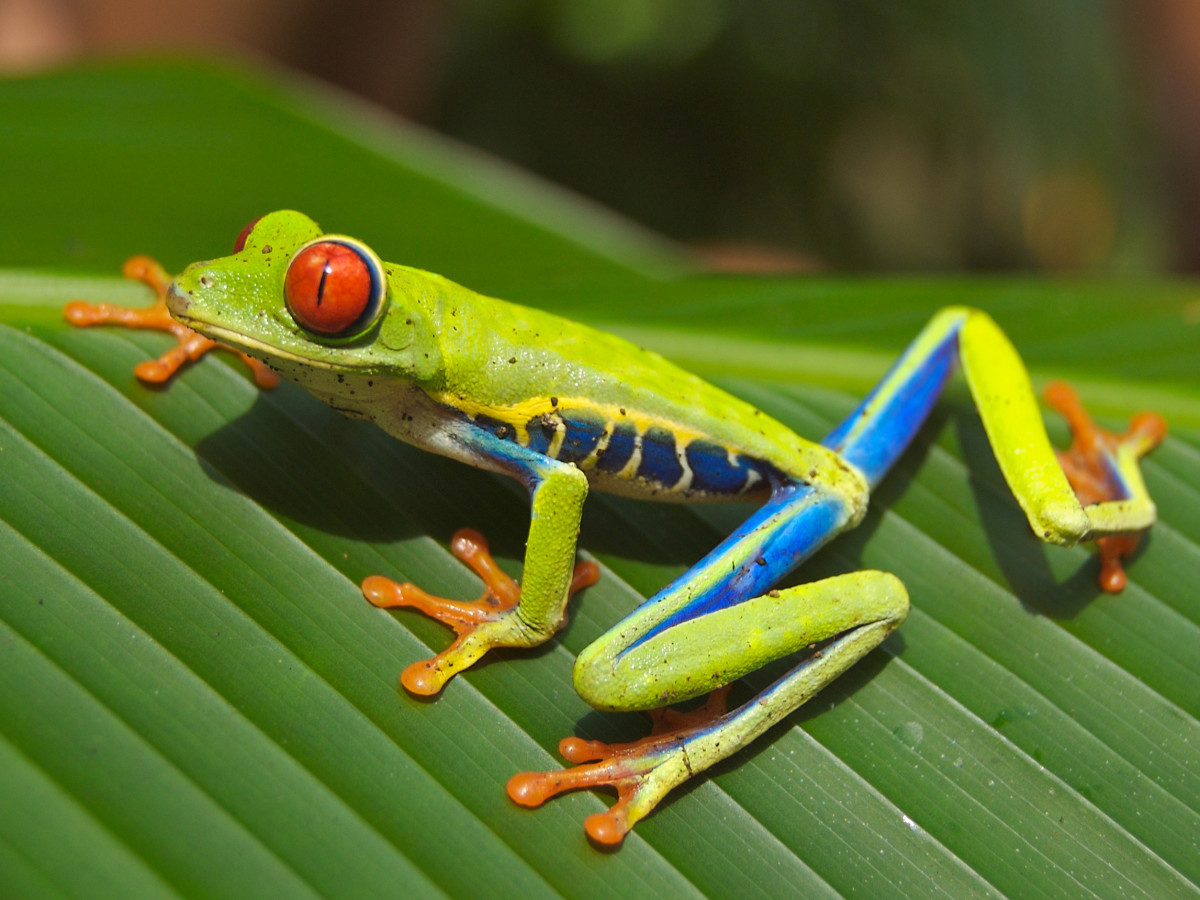
Why is it so hard to find pictures of animals eating other animals?
It’s easy to find photographs of rain forest animals on the web. Want to see a red eyed tree frog? You can find it easily. Want to see a red eyed tree frog eating an insect, its sticky tongue extended in the process of capturing its prey? Not so easy.
Want to see a jaguar in repose? No problem. Want to see a jaguar feasting on fresh caught meat? Not so easy.
Even pictures of Amazon villagers eating readily recognizable unprocessed foods are hard to come by. Is it possible that we have some kind of taboo about the nature of eating and food?
Plants of the Amazon Rainforest
- Cocoa – Wikipedia, the free encyclopedia
- Medicinal Plants of the Amazon Rainforest
- The Amazon Rainforest
- Jungle Photos Amazon Plants
Amazon rainforest plants photos and information
Scarlet Macaw
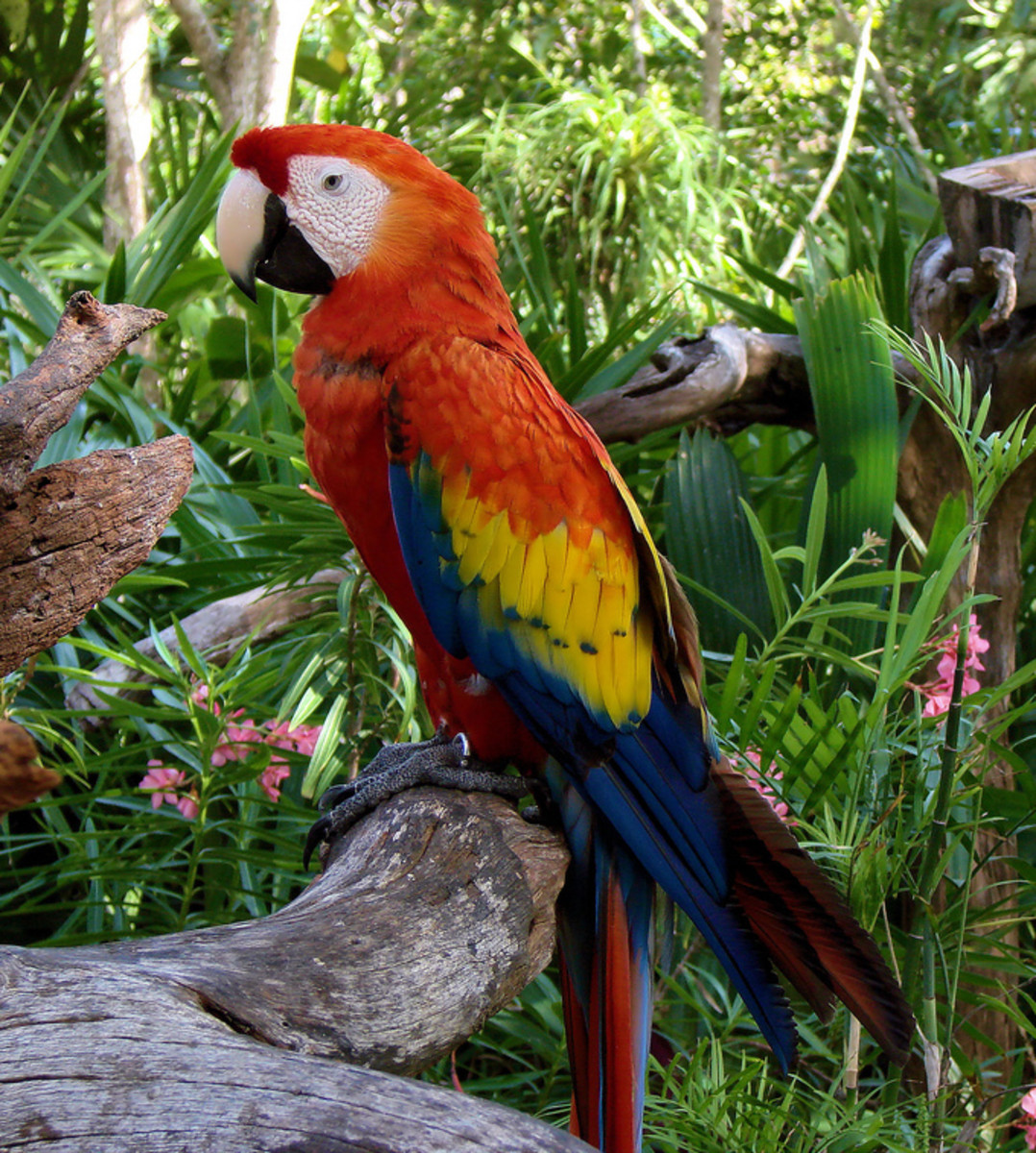
Basic Rainforest facts
Besides having good arts and crafts skills, and a good dramatic flare for depicting the struggle for life, making a rain forest diorama should reflect some knowledge about the rainforest itself. A rain forest is a forest where it rains a lot, hence the name. There are two types of rainforest: tropical and temperate. There is more than one rainforest of each sort on this planet.
Temperate rain forest can found in North America (in the Pacific Northwest, the coast of British Columbia), in Europe (such as in the coastal areas of Ireland and Scotland, southern Norway, parts of the Western Balkans, northwest Spain, as well as areas along the eastern Black sea, such as Georgia), in Southeast Asia (southern China, Taiwan, much of Japan and South Korea), and in South America (Chile) and Australa and New Zealand.
Tropical rainforests can be found near the equator. Some famous tropical rainforests include those in Southeast Asia (e.g. Myanmar, Papua New Guinea), Sub-Saharan Africa (e.g. the Congo Rainforest, famous from Gorillas in the Mist), South America (the Amazon Rainforest), Central America (Bosawas) and on many of the Pacific Islands (e.g. Hawaii).
I asked my daughter which sort of rainforest she was supposed to do her diorama about. She said any rainforest would do. But then she went on to talk about jaguars and new world monkeys and macaw parrots, so I came to the conclusion that she was interested in the Amazon rainforest in particular.
King Vulture: A Scavenger

The King Vulture
The Amazon Rainforest and plants
The Amazon rainforest is the source of many medicinal plants, including trillium for snakebite, chincona to make quinine to treat or prevent malaria, and the coca plant from which we get cocaine, a stimulant that was once an important ingredient in Coca-Cola. However, how would my daughter’s teacher really feel if the diorama she turned in contained models of coca plants? To play it safer, I pointed out to my daughter that the original, uncultivated plants from which we get cocoa, our family’s recreational drug of choice, otherwise known as chocolate, also originated in the general vicinity of the Amazon. “Would you like to draw a cocoa tree for your diorama?” I asked.
“No, not really.”
My daughter’s interest in the rainforest does not extend toward any specific plants as producers. Her diorama featured generic trees and vines and moss, and generic over-sized flowers. She was much more interested in the animals.
Jaguar: The Ultimate Consumer
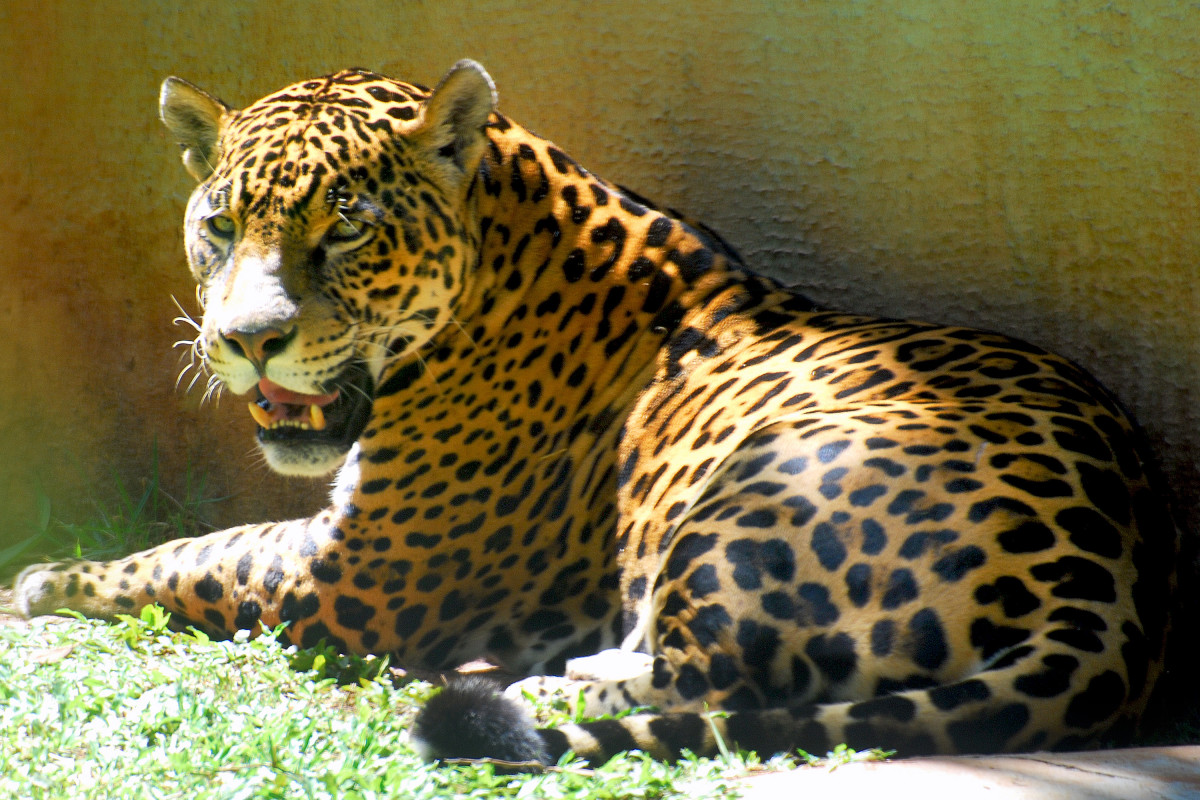
The Jaguar
Animals
My daughter’s favorite animals are birds, so her diorama includes a macaw and and a King Vulture. She has included one amphibian, a tree frog, and three mammals, a jaguar, a woolly monkey and a little girl.
It was I who found the picture of the girl and her pet monkey and showed it to my daughter.
“She’s so lucky!” my daughter exclaimed.
“You can add her to your diorama,” I suggested.
“No, I can’t!”
“Why not?”
“Because the teacher said not to add people where they don’t belong. She said she’d count off!”
“But there are people living in the Amazon,” I said. “They do belong there. It’s their home. They are part of the ecosystem.”
My daughter eventually agreed to add the girl and the monkey. “But I’m not saying he’s her pet, because that might make the teacher mad.”
Amazon girl and her pet woolly monkey: Both Consumers
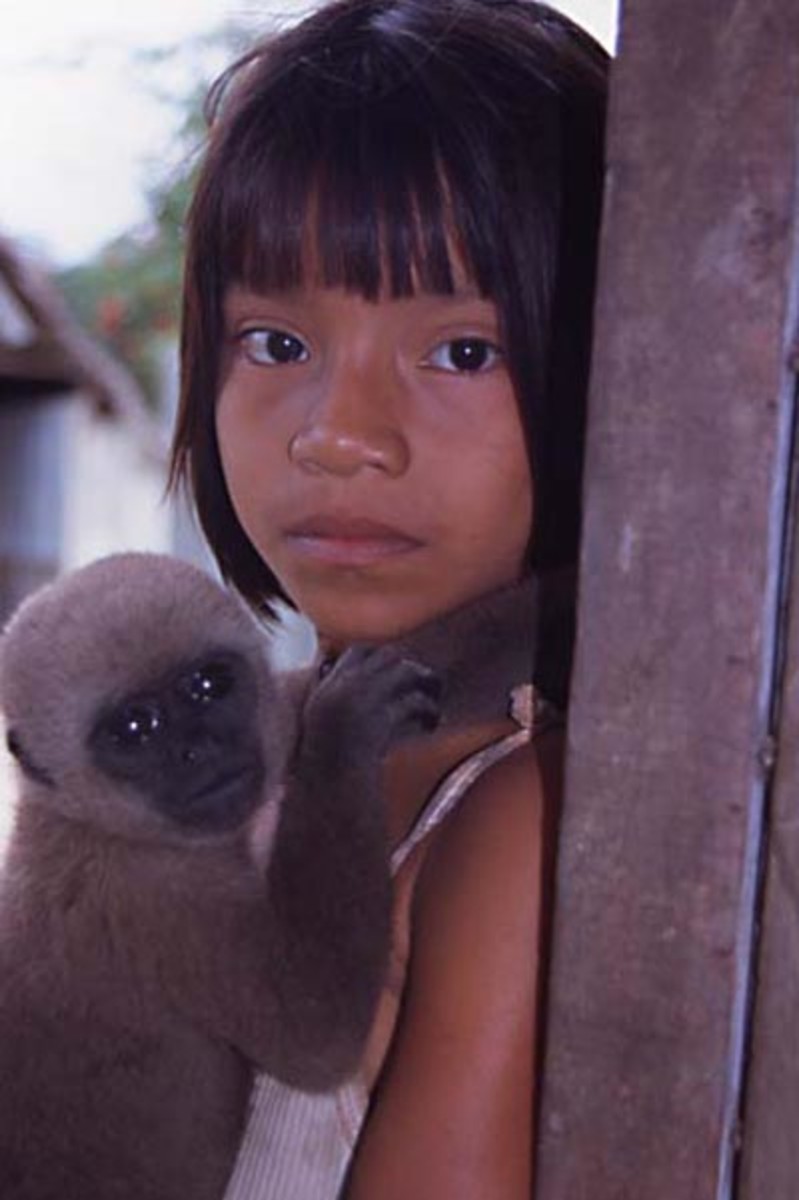
Amazon Children
- Jungle Photos Amazon People – Children
Junglephotos Amazon people children photos
Humans and other primates can and do live together
To me, that picture of the girl and the woolly monkey means more than words can say. There are those who hope to convince the general public that humans and primates can never coexist side by side, and that the only place for primates is in a zoo, a sanctuary, or “the wild.” The wild, they assume, is a place where humans cannot live. Their goal is to make sure that no primate ever be kept as a pet by another primate, and particularly, not by a human. They feel that such a relationship is unnatural. Even my ten year old daughter has picked up on the vibes, and she’s decided not to tell her teacher that the woolly monkey belongs to the little girl.
While I agree that a primate does not belong in New York City, it’s the city that is unnatural, not the primate. And yes, a rainforest is a place where people can and do live side by side with other wild animals.
Some of those who argue against co-existence mention that man took a long time to evolve out of the wild state, and only animals that have been domesticated along with man in his rise to “civilization”, like dogs and cows and chickens, can live near human habitations. These people forget that not all humans have followed the same path. There were humans long before there was agriculture. Some of us live much closer to the natural state than others.
Vermilion Waxcap Mushrooms: Decomposers
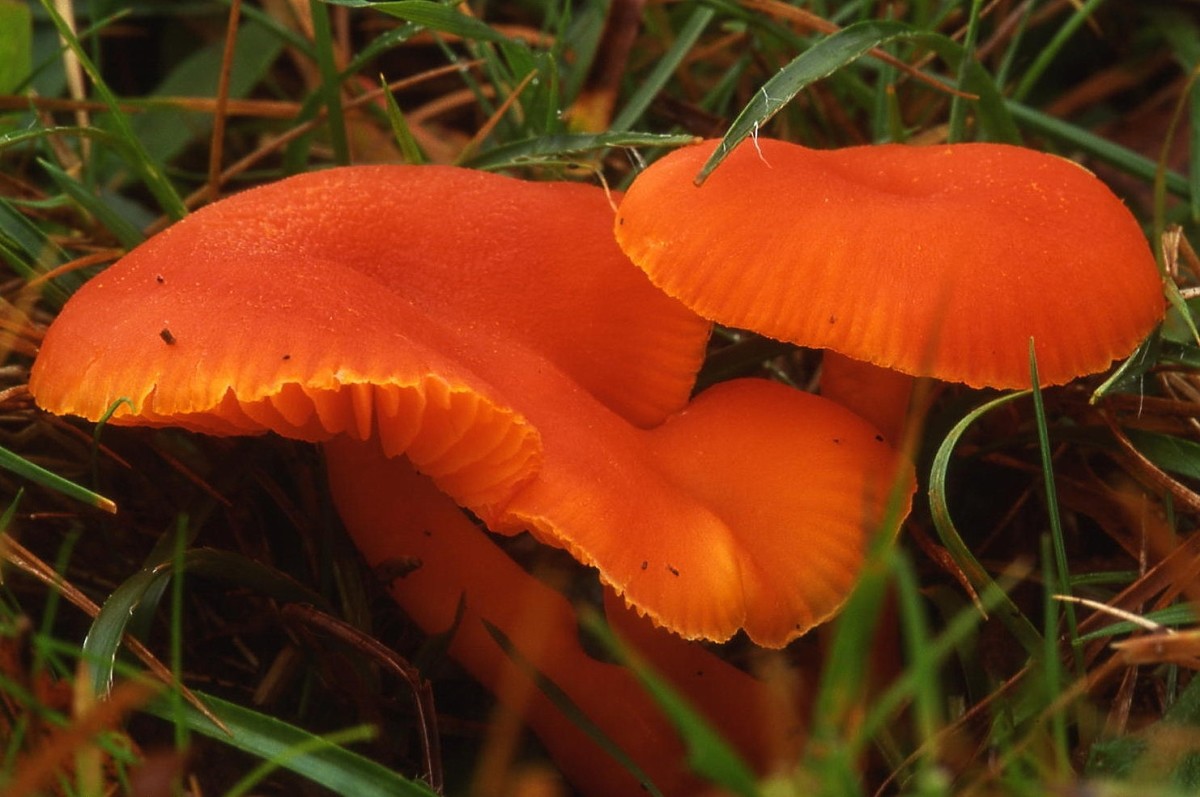
Amazon Decomposers
- WikiAnswers – What are the decomposers of the amazon rainforest
Wild Animals question: What are the decomposers of the amazon rainforest? fungi,bactiria,mosses
Shared Excitement
My daughter noticed my excitement about this project. “If you were in my class, you’d probably make all A’s,” she said. “You like doing this so much!” I laughed. I’ve been to fifth grade. Now it’s her turn. And this is her project. So maybe I should back off a little.
At first, my daughter was not nearly as interested as I was, but she started to get excited as the diorama began to take shape. In the end, she exclaimed: “This looks so good!”
Then she looked again, and sighed: “I’ll probably get counted off for neatness.” It’s true. It wasn’t all that neat. Strands of chimp hair were sticking to the pieces of tape she had used. The diorama is not nearly as organized as it might be. There are issues of scale and spacing. We don’t actually see any animals in the act of devouring other animals. But it’s a fifth grade science project — made by a fifth grader.
And besides, who ever heard of a rainforest that was neat!
(c) 2009 Aya Katz
My Daughter’s Diorama
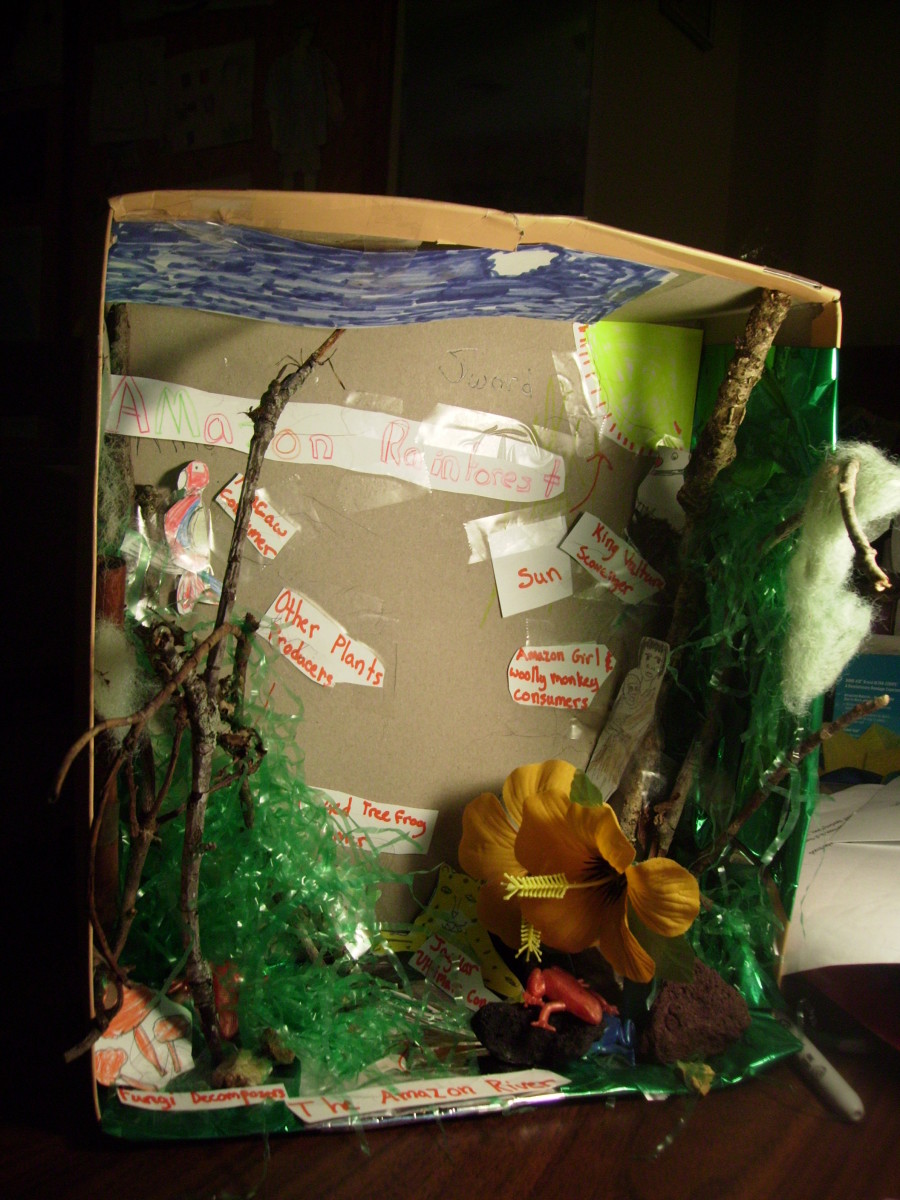
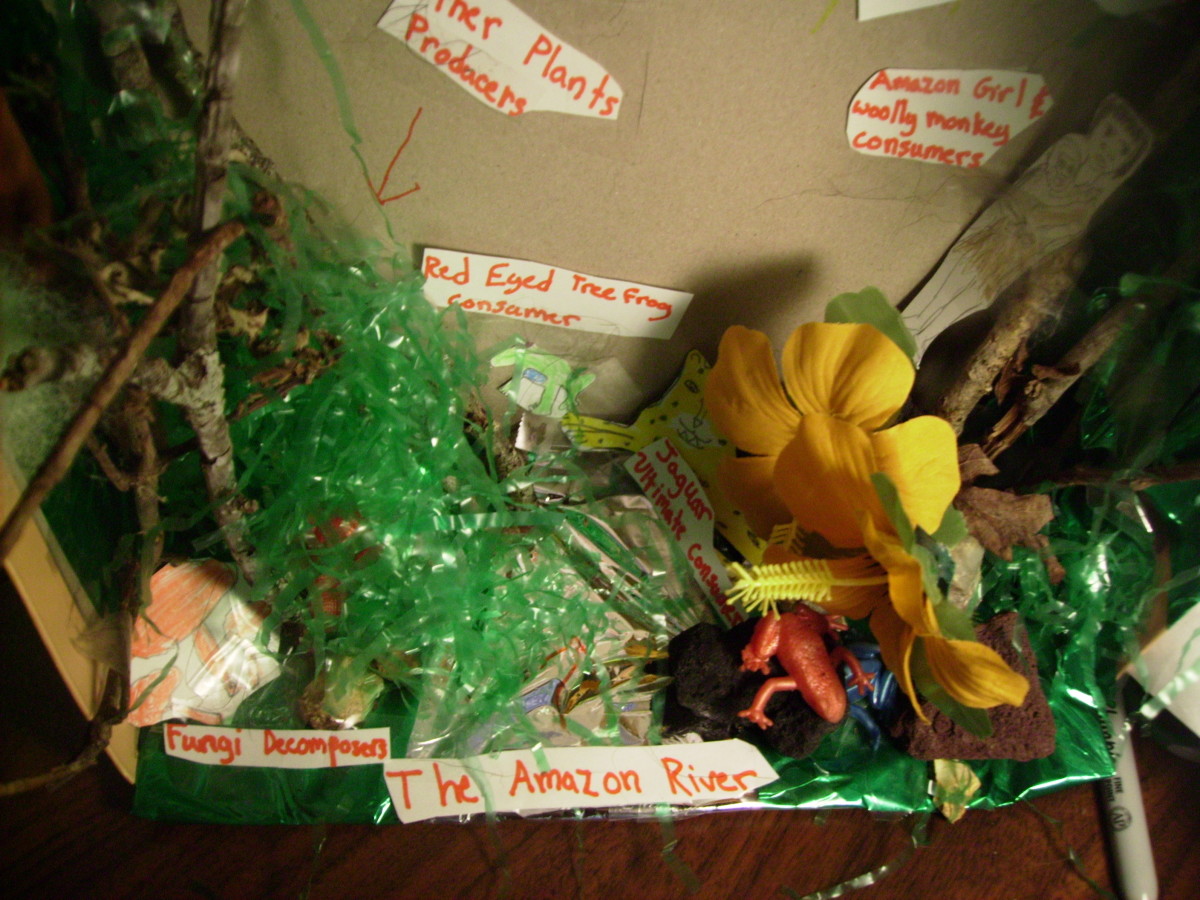
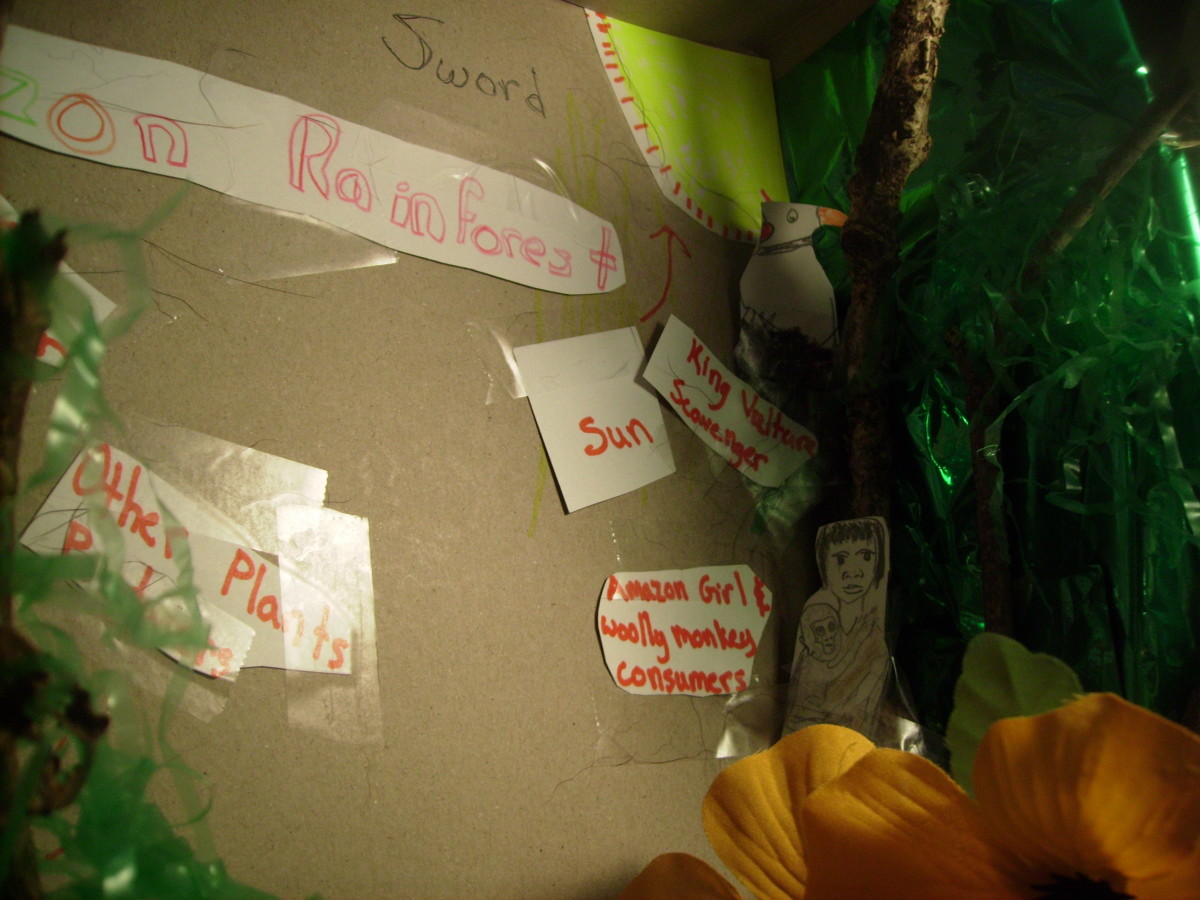


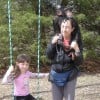

COMMENTS
Aya Katz 2 years ago from The Ozarks
Thanks, VA_Teach. I am glad you found this a worthwhile resource.
It was an enjoyable and educational project, and we had a nice time working on it. It’s just odd sometimes when teachers assign creative projects — such as writing a short story based on a science premise — in the science classes, and then they give multiple choice and fill in the blank in the classes where creativity should have been what was being called for — such as English composition. Art is a wonderful outlet, and I am in favor of humanities classes, but it’s just not always in the art classes where art is most called upon these days.
VA_Teach 2 years ago
Hi!
I appreciate the detail you put into this article – it’s an incredible resource for parents and teachers who can direct families here for ideas.
I hope you understand, though, that what you and your daughter executed was actually much higher level thinking than an essay or multiple-choice test. Having to apply knowledge to another form stretches the brain in new directions.
I am sure any teacher would be just as impressed by a crude pencil drawing labeled “parrot” as by a figure sculpted out of clay. You can be just as neat with simple materials as expensive ones.
Grades for this project would be based on the knowledge that was demonstrated, not the means by which is was transmitted.
I applaud you both on a well-done project showing off what she clearly understands! 🙂
Last thing, thanks for being such an involved parent!
Tionna 3 years ago
I am doing a heard magnet elementary school project in the 5th grade and came on here is to get an idea and didnt
Janelle 3 years ago
I’m a high school science teacher and we also get students to present their understanding of concepts graphically/visually, as tests don’t always suit all students. As long as the students can show they have incorporated all the main ideas in their design, it doesn’t matter if they’re not all budding artists or designers.
ar3 5 years ago
r335
Aya Katz 6 years ago from The Ozarks
Teachergirl1, thanks for the input. Making dioramas can be an enjoyable and educational activity. However, because it calls on arts and crafts skills, it just doesn’t seem fair to award a science grade based on the appearance of the model. I have the same issue when they award language arts grades based on projects that require drawing skills.
teachergirl1 6 years ago
The National Science Teacher Association promotes making Dioramas even at the high school level. I wouldn’t make it a test grade though. 🙂 There is a Adopt a Dino Project that includes building one from NSTA.
Aya Katz 6 years ago from The Ozarks
Emmanuel, you may be right. Maybe the teacher was hoping to learn more about the rain forest from the students.
Emmanuel Elembo 6 years ago
According to me, the teacher wanted to learn from pupils. What a triky and hard homework for kids to do. Diorama project isn’t funny at all as long as it require bunch of thing to make it work.
Aya Katz 6 years ago from The Ozarks
HTodd, thanks!
htodd 6 years ago from United States
Great post…Thanks
Aya Katz 6 years ago from The Ozarks
Injurycase, I agree that teaching should be enjoyable and that teachers should use their creativity in teaching students. Students are creative, too, but each one in a different way.
It seems unfair, though, to give science grades on the basis of the ability to show artistic merit in the design of a diorama. It would be just as unfair as giving grades in mathematics based on the ability to draw pretty pictures of numbers, or grades in grammar and spelling based on the ability to complete a construction project. All these skills are valuable, but grading a student on artistic performance in a class that is supposed to be about something else is not helpful to the student or to the class as a whole.
So a diorama project is a fun thing to do, but should not be for credit except in art class.
injurycase 6 years ago from North Pearl Street, Albany, New York
Teaching is an enjoyable task thus a teacher should be creative enough to the activities that she is presenting. To is is to believe. this is how the minds of children works so it is good that present visual aids to represent the lesson and for catching the interests of the student.
injurycase 6 years ago from North Pearl Street, Albany, New York
Teaching is an enjoyable task thus a teacher should be creative enough to the activities that she is presenting. To is is to believe. this is how the minds of children works so it is good that present visual aids to represent the lesson and for catching the interests of the student.
Aya Katz 6 years ago from The Ozarks
Caitlin, my daughter used little twigs that she found outdoors, and then she attached Easter grass to them.
caitlin 6 years ago
i need to know what materials i can use to make trees and stuff ..
muhammad majid 08 7 years ago
http://alturl.com/h6sjp Aya Katz 9 months ago
Glassvisage, thanks! I bet you made terrific dioramas when you were in school! It’s so nice that you dropped by!
sara 2 months ago
thanx!
Aya Katz 2 months ago
Sara, you’re quite welcome. Hope this helps.
Lisa 2 months ago
Thanks this helped a lot
Aya Katz 8 weeks ago
Lisa, you’re very welcome. Glad it helped.
anna 5 weeks ago
cool
Aya Katz 5 weeks ago
Thanks, Anna!
Aya Katz 7 years ago from The Ozarks
Thanks, Anna!
anna 7 years ago
cool
Aya Katz 7 years ago from The Ozarks
Lisa, you’re very welcome. Glad it helped.
Lisa 7 years ago
Thanks this helped a lot
Aya Katz 7 years ago from The Ozarks
Sara, you’re quite welcome. Hope this helps.
sara 7 years ago
thanx!
Aya Katz 7 years ago from The Ozarks
Glassvisage, thanks! I bet you made terrific dioramas when you were in school! It’s so nice that you dropped by!
glassvisage 7 years ago from Northern California
Aya, this Hub is amazing. So comprehensive! I miss making dioramas in school, and this really inspires me to get out an old shoebox, print out some photos of rainforst animals and get crafy 🙂
Aya Katz 8 years ago from The Ozarks
Lea’s Life, thanks! I look forward to reading about your daughter’s castle building project!
Lea’s Life 8 years ago
My daughter and I were reading this and really enjoyed your humor in presentation…I am new to this all and checked your hub out since I am in the process of writing about her castle building project. The diorama turned out cute and those comments about the teacher taking points off for certain things were funny but also touching when you see how seriously the kids can take these assignments to heart!Thank you for sharing
Aya Katz 8 years ago from The Ozarks
Crazy888, thanks for the clarification. Yes, sometimes there is too much homework.
Crazy888 8 years ago
I guess you didn’t know what i meant. I meant that too much homework was a bad thing
my mistake
Aya Katz 8 years ago from The Ozarks
Crazy888, I’m not sure how to interpret your comment. Do you mean that it’s good to have lots of homework, as in: “Yes to much homework!” Or do you mean there is more homework than necessary, as in: “Yes, too much homework”?
Crazy888 8 years ago
yes..to much homework i say!
Aya Katz 8 years ago from The Ozarks
Crazy888, yes, this is just another hub about fifth grade homework.
Crazy888 8 years ago
This hub goes back to the 5th grade homework one!
Aya Katz 8 years ago from The Ozarks
Kelsey, thanks for your comment. I’m so glad that this can help you with your 8th grade project! Best of luck!
kelsey 8 years ago
thanx for all this information i have this same exact project due on november 23 but im an 8th grader it seams so hard and frustrating. It seams so much easier after reading this.
Aya Katz 8 years ago from The Ozarks
Thanks, Crazy888.
Crazy888 8 years ago
wow..you dont stop writing do you?? good job!
Aya Katz 8 years ago from The Ozarks
Elayne, thanks! My daughter did get a high A on her project.
Elayne 8 years ago from Rocky Mountains
I think you should definitely get an “A+” for all the research you did.
Aya Katz 8 years ago from The Ozarks
Julie, thanks! I’m so glad this helped. I hope you and your daughter have as much fun with this project as my daughter and I did!
Julie 8 years ago
Thank you so much for such an informative article! Your tips are fantastic! My daughter is making a rainforest diorama for her 2nd grade science class and we have a lot of materials on hand since I’m always into crafty projects. Your page made this a one-stop place to get all the info I needed on specific plants/animals to include. Great job!
Aya Katz 8 years ago from The Ozarks
Hummingbird, thank you! My daughter really enjoyed working on this project.
Aya Katz 8 years ago from The Ozarks
Iqbal, thanks!
Hummingbird5356 8 years ago
I liked this hub very much, it is very informative and the photos are perfect. We never had projects like this at school. Excellent.
iqbal88 8 years ago
awesome
Aya Katz 8 years ago from The Ozarks
Khmohsin, thanks for your comment!
khmohsin 8 years ago
Topic choosing is a fun and you have expert in it. Keep it up Nice hub.
Aya Katz 8 years ago from The Ozarks
Prasetio, thanks!
prasetio30 8 years ago from malang-indonesia
really great information. you always have different topic.
Aya Katz 8 years ago from The Ozarks
Jerilee, yikes! Good luck with your specimen gathering. Stay cool!
Jerilee Wei 8 years ago from United States
We’re supposed to have record breaking highs this weekend — sigh.
Aya Katz 8 years ago from The Ozarks
Jerilee, is it still warm there? I gave Sword some hot chocolate as an after school treat. It’s definitely chilly here.
Good luck with Kaela’s project! Let me know how it turns out.
Jerilee Wei 8 years ago from United States
The perfect hub for me to read this weekend, as such projects are often big debates among the three generations in this household. My daughter oversees the day to day massive amount of homework Kaela has. I have been appointed the coach for science, etc. projects.
This weekend we’re doing a semester one science project of 25 five native Florida trees. So hoping for cooler weather so we’re not out collecting them in mosquito land.
Where we get into trouble is grand visions that don’t match or go off on a tangent.
Aya Katz 8 years ago from The Ozarks
Thanks, Joy!
Joy At Home 8 years ago from United States
Glad to hear it. Hopefully your daughter will carry on what you have taught her.
Aya Katz 8 years ago from The Ozarks
Joy at Home, thanks! It’s always hard to realize in the final product the grand visions in our heads of how a project should turn out, but it’s still a lot of fun to try. I think my daughter and I are doing a good job of keeping an even keel as far as socialization goes. She’s sufficiently well socialized to realize what passes for mainstream thinking (and keeping out of trouble with authority figures), but not so well socialized as to share all those values.
Joy At Home 8 years ago from United States
I loved making dioramas of everything when I was in gradeschool…until I couldn’t get any of them to match the visions in my head. I still like them, and if I had time to mess around with such things for my own enjoyment, would probably experiment with more sophisticated arrangements and materials than I chose as a child.
This was an incredible hub. Thanks for being a good mom and not letting your daughter be totally brain-washed by those who would have her believe that people and wild animals cannot co-exist.
Aya Katz 8 years ago from The Ozarks
Scott.Life, thanks! It was a fun project for my daughter, and she does seem to be getting more into the material. However, I wouldn’t think it would hurt to also assign an essay about the rainforest. That could be fun, too!
Scott.Life 8 years ago
What a neat request from the teacher. I suspect the intent was to get the students to investigate the many layers that compose the ecosystem as they would in effect be building them into the diorama. I never got any cool assignments like this when I was young, we wrote essays. This was a very fun hub for me and entertaining.
Aya Katz 8 years ago from The Ozarks
Thanks, Paraglider!
Dave McClure 8 years ago from Kyle, Scotland
I always enjoy your multi-layered approach – the socio-philosophical commentaries sprinkled in with the rest. A good picture set too. Nice hub.